Nora Chipaumire’s gukurahundi
December 15, 2009 • 8 minute read
What can i say: you have given birth to this project with your love and support. In watching the dvd of the workshop i am so pleased with how far we can come in the work, and how much the workshop helped me shape / or name / find language. Sincerely, Nora (from an email on September 23, 2009)
The Museum of Contemporary Arts’ Community Fund Project achieved breakthroughs that could be only derived from its unique framework. Convening partners to design a program to occur well before Nora’s residency cemented a vision everybody could believe and feel invested in, and established a foundation of trust. For Nora’s community week, the partners and MCA developed and recruited participants for a 2-part workshop. Our planning meetings began three months before Nora’s arrival, providing ample time to canvas potential participants and educate them about Nora and her work. Once invested in the workshops’ success, the partners became self-motivated and significantly broadened our reach into immigrant/refugee communities about Nora’s ensuing residency.
To establish a similar sense of agency in the community participants, the partners and MCA devised a tiered system of commitment for them to choose. The participants, who were nominated for workshops by the community partners, had to register by submitting a statement of interest. The requested minimum involvement was attending one of the three-hour workshops. Between the workshop dates, they could also provide Nora feedback at a private showing of her work-in-progress. Nora said she received real personal and creative breakthroughs from this two-pronged encounter with community. For Nora’s residency, workshop participants and partners were comped to opening night and joined in Nora’s post-talk.
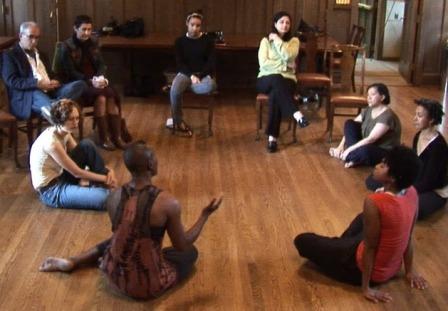 Another breakthrough derived from the community project was the video recording of 12 hours of Nora’s workshops and showing of the work-in-progress, which MCA produced into a short documentary in the three-month interim before Nora’s residency. As part of Nora’s residency, the MCA invited workshop participants to reconvene for a private screening of the documentary, followed by discussion of their new understanding of the role of art in their lives. The documentary illuminates the possibilities and intricacies of artists working in community and is an unmatched tool for MCA to standardize a successful workshop and promote the idea to potential partners and the public. MCA also advanced the documentary to major media and our workshop partners to promote the residency.
Another breakthrough derived from the community project was the video recording of 12 hours of Nora’s workshops and showing of the work-in-progress, which MCA produced into a short documentary in the three-month interim before Nora’s residency. As part of Nora’s residency, the MCA invited workshop participants to reconvene for a private screening of the documentary, followed by discussion of their new understanding of the role of art in their lives. The documentary illuminates the possibilities and intricacies of artists working in community and is an unmatched tool for MCA to standardize a successful workshop and promote the idea to potential partners and the public. MCA also advanced the documentary to major media and our workshop partners to promote the residency.
Our community partners for Nora are immigrant/refugee service agencies committed to various world regions: Jane Addams Hull-House, which hosted two of the advance meetings and Nora’s workshops; Interfaith Refugee and Immigration Ministries, host of the third advance meeting; CAAAELII, the Coalition of African, Asian, European and Latino Immigrants of Illinois; United African Organization; Chinese Mutual Aid Association; Cambodian Association of Illinois; Centro Sin Fronteras; Polish American Association; Mujeres Latinas En Accion; World Relief; International Refugee Center of Heartland Alliance; Korean American Resource and Cultural Center; City of Chicago Commission on Human Relations, Advisory Council on Immigrant and Refugee Affairs; and Chicago Cultural Alliance, a consortium of ethnic museums and cultural centers.
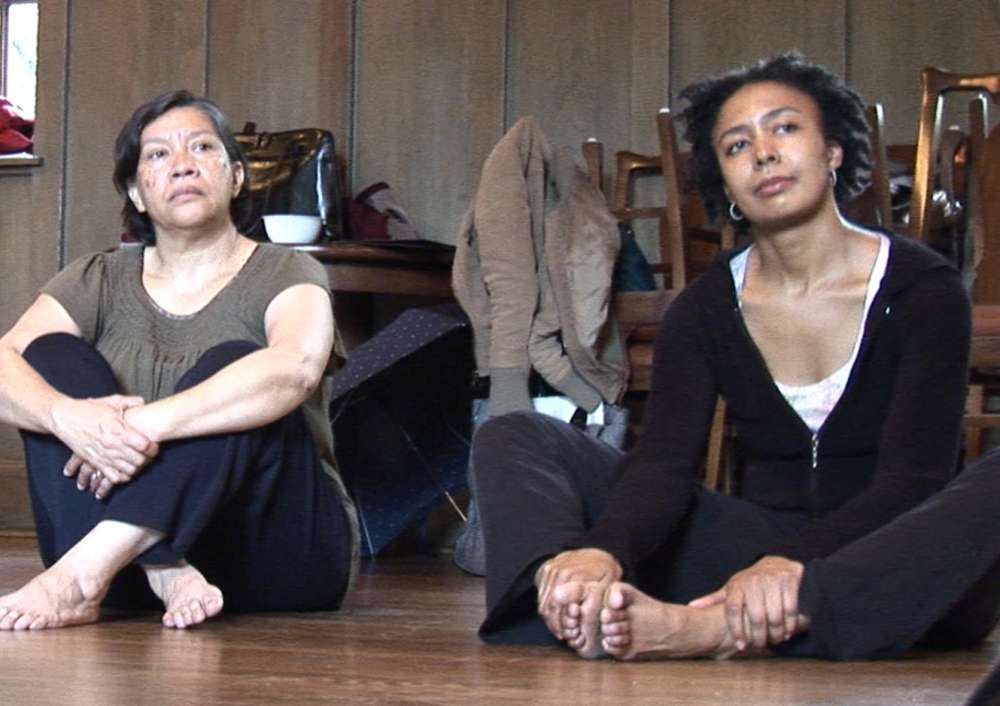 The partners decided to keep the workshops’ framing simple, yet context-specific: Nora would conduct two movement workshops about the migrant experience to explore the possibility of a shared culture, free of geographic and national boundaries. The workshops did not assume prior dance experience. Each ran three hours, divided into three parts: Nora and participants shared personal oral histories, she took them through her signature movement technique, then each retold their story through a personal body language developed after learning Nora’s technique. Jane Addams Hull-House was selected as host for its central location and access by public transit. The workshops were scheduled around work hours (Tuesday, 6 to 9pm; Saturday 11am to 1pm). They were held in Hull-House’s original dining hall (circa 1889), and concluded with a shared meal.
The partners decided to keep the workshops’ framing simple, yet context-specific: Nora would conduct two movement workshops about the migrant experience to explore the possibility of a shared culture, free of geographic and national boundaries. The workshops did not assume prior dance experience. Each ran three hours, divided into three parts: Nora and participants shared personal oral histories, she took them through her signature movement technique, then each retold their story through a personal body language developed after learning Nora’s technique. Jane Addams Hull-House was selected as host for its central location and access by public transit. The workshops were scheduled around work hours (Tuesday, 6 to 9pm; Saturday 11am to 1pm). They were held in Hull-House’s original dining hall (circa 1889), and concluded with a shared meal.
Nora’s life and artistic vision guided the partners in finding the workshops’ ideal participants. This project would be Nora’s first experience opening her development phase to community. Nora—who exiled herself from Robert Mugabe’s Zimbabwe in 1989 and now lives in the U.S.—once said that her aim in creating dance is to confront the “packaging” of Africa as an exotic land of safaris, violence, and famine. We took this to heart in deciding to create our first community residency with Nora. Naturally we aimed to recruit a manageable number of volunteer participants. What we learned about Nora made it clear that the workshop would be for mature women, immigrants from different world regions. This group needed to be ready to share experiences, be curious about other perspectives, and be comfortable in their bodies.
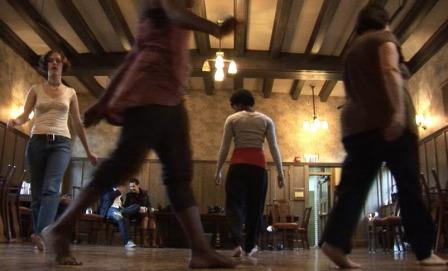 The title of Nora’s performance (our NPN Residency), gukurahundi (early rain), refers to the Matabeleland massacres carried out by the Mugabe government while Nora was still home, from 1982 to 1986. Communicating with words and body, Nora took the participants to a personal place and her homeland. She used very simple movements electrified by passion. At the same time she offered them a solid introduction to contemporary dance, incorporating her key phrasing with ritualistic repetitions and traditional African modes.
The title of Nora’s performance (our NPN Residency), gukurahundi (early rain), refers to the Matabeleland massacres carried out by the Mugabe government while Nora was still home, from 1982 to 1986. Communicating with words and body, Nora took the participants to a personal place and her homeland. She used very simple movements electrified by passion. At the same time she offered them a solid introduction to contemporary dance, incorporating her key phrasing with ritualistic repetitions and traditional African modes.
One vivid demonstration sequence involved a series of hand gestures—a cheery hitchhiking motion, a mudra, a thumbs-up, an “OK”—that devolves until Nora is struggling, her arms seemingly pinned behind her. In addition to introducing participants in a very approachable method to dance, Nora filled the room with sounds of “the real Africa,” as she says, by playing the recorded music of her gukurahundi collaborator, the elder musician/poet-activist Thomas Mapfumo and his band Blacks Unlimited whose music Nora heard her entire life in Zimbabwe.
The community residency’s desired outcome was achieved by practicing three golden rules:
- Involve and empower a manageable number of community-respected and trusted agencies, including the host location, which directly serve the population sought as part of their mission.
- Acknowledge and respect different personal circumstances of the intended participants, by hosting and formatting the programs at locations and times convenient to meet different needs.
- Invite and persist in the artist’s central role in developing, planning, and executing everything. One of the lasting rewards of this community residency is the trust Nora gained from the experience to work closely with a partner and the limitless possibilities to artistic work from opening the creative process. For the MCA, the ambitious scale of this community week–a financial and logistical risk not possible without NPN’s support–establishes and serves as a hallmark of our commitment, accessibility, and openess to meaningful sustainable artist-centered work with community involvement.
Our presentation of Nora’s collaboration with Thomas Mapfumo in gukurahundi was a cross-generational artistic fusion of revolutionary dreams and post-colonial promises. Gukurahundi explored the migrant experience within and outside of Africa and examines how Africa is portrayed to a western, globalized world. The mass dislocation of people today, out of personal choice and increasingly as a result of a hostile environment, gave urgency to this NPN community residency and the culminating performance residency. We hope it provided different entry points for everybody involved, including Nora, to reflect on how they see themselves and they are in turn seen by others.
In conclusion, we invite you to meet some of the remarkable community workshop participants.
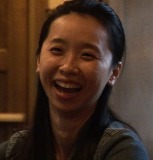
Yu-Ling Hu, from Taiwan
I have been processing personal immigrant issues since I got here years ago. More than that, I have worked with many Asian women dealing with immigrant issues. I am into dance therapy, and want to learn more about Nora’s approach to use movement to express immigrant women’s issues.
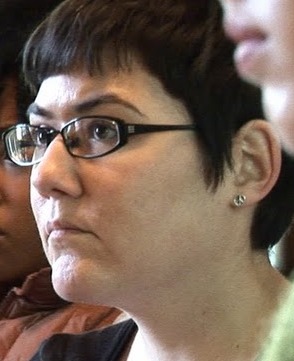 Norma Seledon, from Mexico
Norma Seledon, from Mexico
I arrived with my parents from Mexico at the age of 6. For many, many years I had felt I did not belong in either place. While I have had many years to acculturate, there is always a sense of ambivalence. I have a long history of working with women’s development and believe in the arts’ extreme healing powers.
Serestine Cizanye, from Burundi
I was made aware of the workshop through Exodus World Service. After being forced my home in Burundi I spent many years in Tanzania before settling in the US. I like that (the workshop) involves movement, because I try to incorporate movement into her everyday routine to keep back pains under control.
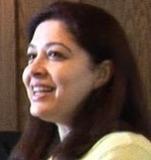 Uzma Jafri, from Pakistan
Uzma Jafri, from Pakistan
I would like to participate in the workshop but am shy in crowds. I was forced to leave my country and have a compelling story to tell. I have been waiting for this moment.
Claudia Serbanuta, from Romania
Growing up in a Communist country where the political system was isolating and alienating the individuals, destroying the communities, stories were rarely shared because of fear. After leaving the country I discovered that even if I am free the stories that need to be voiced out are still hidden.
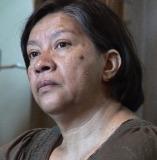 Adriana Portillo-Bartow, from Guatemala
Adriana Portillo-Bartow, from Guatemala
I am a human rights activist and survivor of the war in Guatemala. Since my arrival in the US 24 years ago I have been sharing my story with different audiences all over the United States. Sharing the loss of 7 members of my family to the war in my country with the general public takes a toll on me and I would like to learn to express my emotions in a way that could be therapeutic as well as artistic and educational. I also work with survivors of torture and I think this would be a wonderful skill I could pass along to them.
Invited workshop observers:
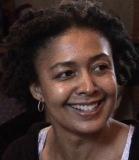 Lisa Biggs Dance and performance have been integral to my own development as a performing artist and now doctoral student at Northwestern University. I’m interested in how the body, especially the bodies of women of color, are used by them and by others to tell stories about the past, about crossing boundaries, and the potential for other ways of being in the world in the future.
Lisa Biggs Dance and performance have been integral to my own development as a performing artist and now doctoral student at Northwestern University. I’m interested in how the body, especially the bodies of women of color, are used by them and by others to tell stories about the past, about crossing boundaries, and the potential for other ways of being in the world in the future.
Dana Horstein teaches English as a Second Language to adults at Asian Human Services. One of her projects is working with her students to dramatize their personal stories: she has worked with a number of local oral history projects in Chicago, including the Chicago History Museum, Veterans Art Museum, and the After School Matters Program. She has also studied many dance forms, such as African, butoh, and contact improvisation.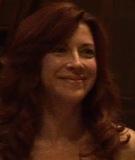
Jennie Moreau-McGowan is an actor and communications trainer who is especially interested in the telling of stories – and how art makes that possible.
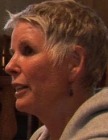 Paula Frasz is a modern dance instructor/choreographer at Northeastern Illinois University, and is passionate about the use of narrative in art.
Paula Frasz is a modern dance instructor/choreographer at Northeastern Illinois University, and is passionate about the use of narrative in art.
David Ravel is director of Alverno Presents, the performing arts series at Alverno College in Milwaukee, WI. Alverno Presents is an NPN partner.
Photos courtesy of Steven Rosofsky.
The Community Fund is made possible by the Doris Duke Charitable Foundation, the Ford Foundation, the National Endowment for the Arts (a federal agency), the MetLife Foundation, and the Nathan Cummings Foundation.
published December 2009